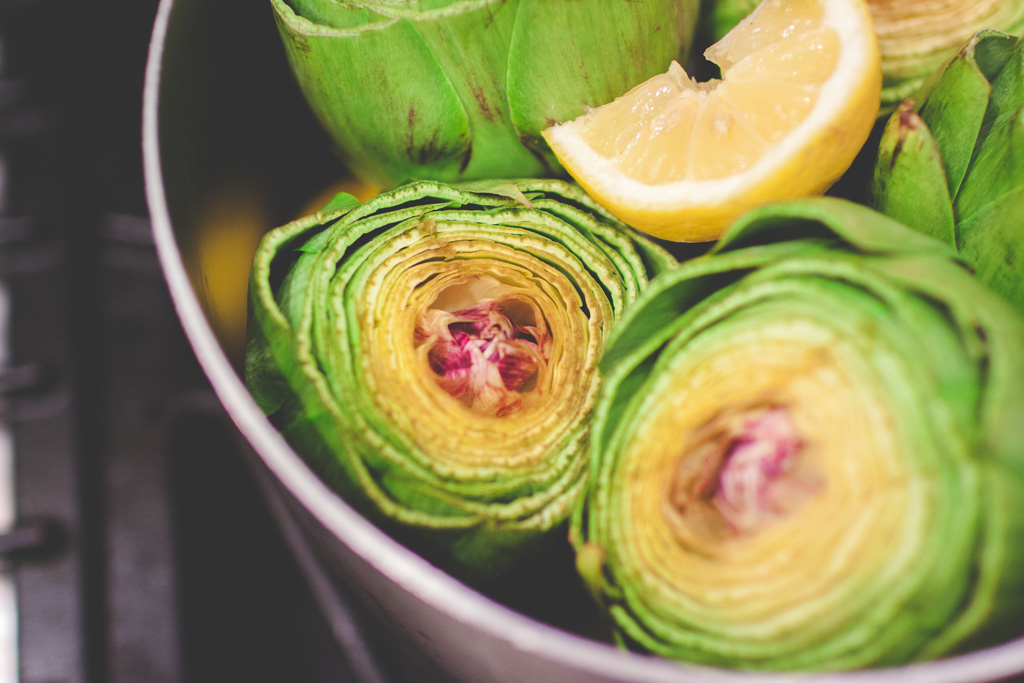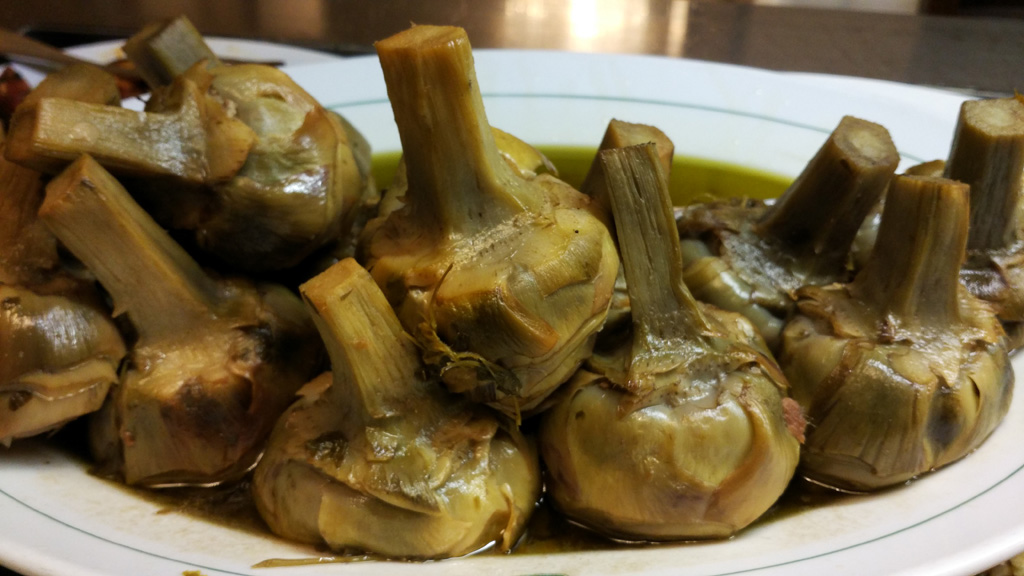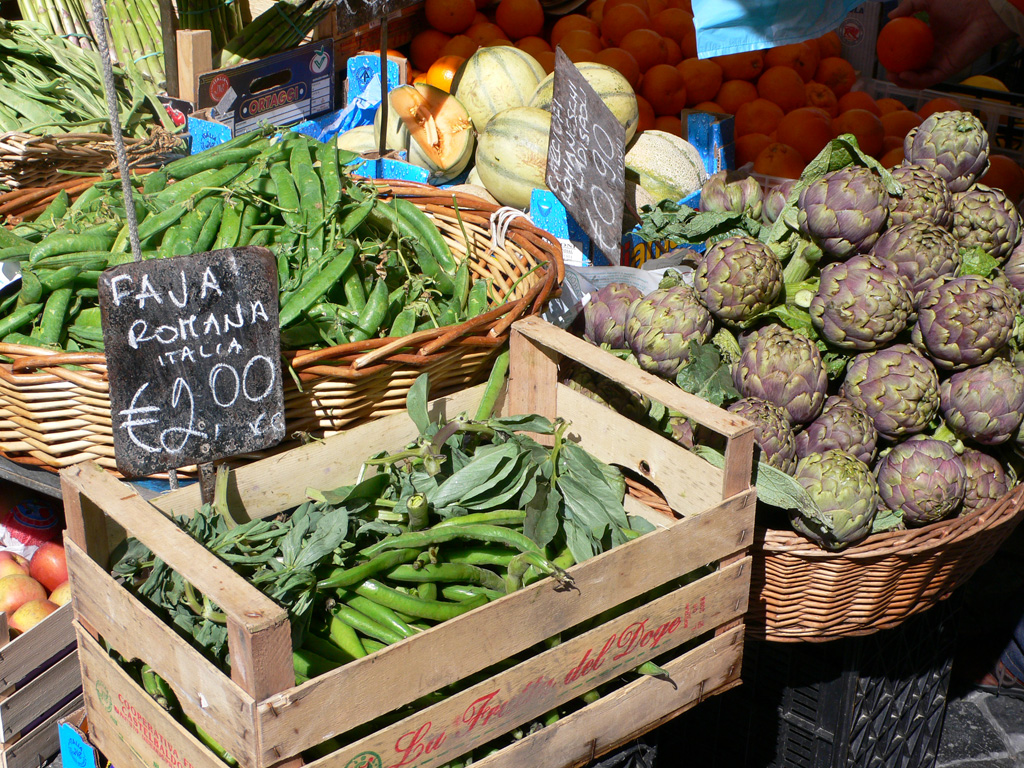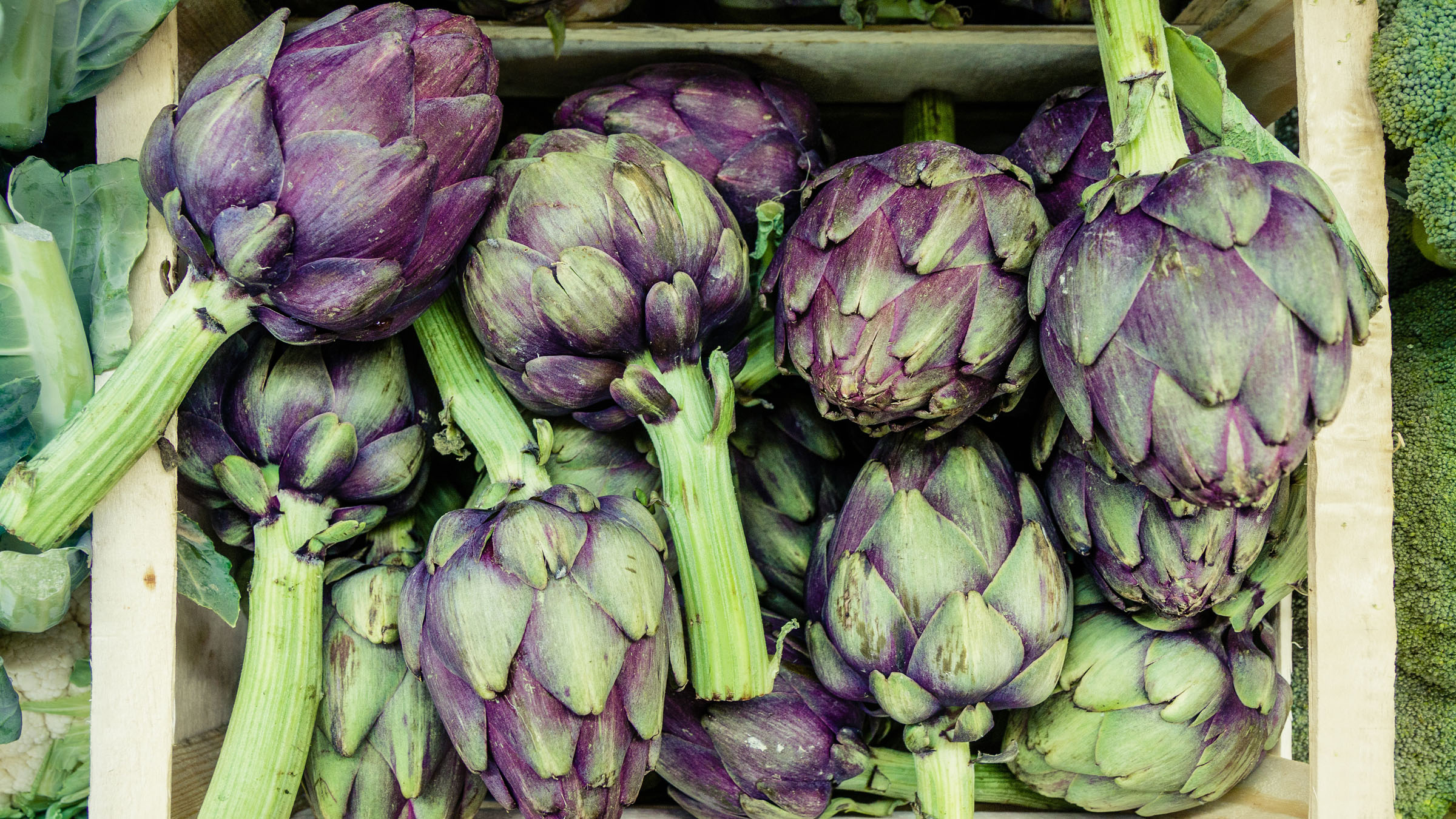“Even artichokes have hearts,” said the iconic Amélie Poulain of the film Amélie, and if that’s not enough reason to fall in love with the thistle, we’ll give you 10 more.
1. They’re Not Hard To Prepare (But Make Sure Your Knives Are Sharp)
While using artichokes from a can or jar is the easy option, it really pays off just to give fresh ones a try. Once you get the hang of cleaning them, it really won’t take you that long. First: choose artichokes with firm green leaves, not too many brown spots, and with the leaves packed tightly together. Fresh ones feel plump and heavy, and make a squeaky sound when you gently press them.
Be aware that artichokes start browning quickly when exposed to oxygen, so clean them just before you prepare them. Otherwise, to prevent oxidation, place cleaned artichokes in acidulated water, which is a fancy way to say ‘water with a little lemon juice or vinegar added’. Most preparations call for trimming the upper part of the woody leaves with a sharp bread knife, and cutting off the spiky tops off the remaining leaves with kitchen shears or scissors. Use a paring knife to get rid of the most fibrous bits around the stem. If you’re going to stuff the artichokes, cut away the hairy, inedible fuzz in the centre, aptly named ‘the choke’.
2. They’re Incredibly Healthy
Artichokes are good for you, with a long list of nutrients to back up the claim: rich in vitamins A, C and K, as well as folate, magnesium, manganese and potassium. Their antioxidant content is through the roof, topping the chart for antioxidants found in vegetables. These types of antioxidants, cynarin and silymarin, have especially good effects on liver health. Plus, they’re high in fibre, which is good news for the gut.

3. They Can Be Simply Délicieux
Eat your artichokes the way many French do: very slowly. Steam the artichokes for around 30-40 minutes – stems upward – over a layer of simmering water. Once a leaf can be easily pulled out, they’re done. Eat them leaf by leaf, each dipped in a little vinaigrette, aioli or other sauce, before scraping off the tender meat with your lower teeth. Once you arrive at the centre, scrape out the hairy choke (if you haven’t already done so) and get the last reward: the delicious heart, which you can devour in its entirety.
For a Sicilian treat, add a mixture of breadcrumbs, garlic, fresh parsley, grated cheese and olive oil in between the leaves before steaming.
4. They’re Wonderful When Braised
Rome is home to many artichoke dishes, using the local mammole, or romanesco artichokes that grow in Lazio. Compact and without much fuzz, the spheres are perfect for many local artichoke dishes, but alas, their season comes to an end around May, when they are replaced with Southern Italian varieties. One of the Roman cuisine’s favourites is carciofi alla romana, artichokes braised in generous amounts of olive oil, with parsley, garlic and mentuccia, wild mint.
[Photo: Popo le Chien/Wikimedia Commons]

5. They Can Be Deep-Fried. Yes, We Said Deep-Fried!
Anything fried carries our seal of approval, but deep-fried artichokes are a true thing of beauty. Such are the carciofi alla giudia, or Jewish-style artichokes, a dish originating from the Jewish community of Rome. The artichokes are given a firm trim, eliminating all hard leaves, then deep-fried in oil at a low temperature to make them tender, followed by a hot-oil bath turning the leaves brown and irresistibly crispy. They look beautiful on the plate, too.
6. They Are An Ingredient Of Vignarola, Or ‘Spring On A Plate’
We’re staying in Rome just a little longer for vignarola, a stew that is a true celebration of spring. At the local markets, a lot of fresh vegetables come into season all at once: green peas, fresh fava beans, scallions, lettuce and artichokes. Depending on the recipe, vignarola has the addition of guanciale (cured pork jowl) or pancetta, fresh green herbs and a good glug of white wine.
[Photo below: Heather Cowper/Flickr]

7. They’re Great In Party Food – But Skip The Dip
Everybody knows the artichoke as a party favourite – together with its sidekick sour cream – as the classic chip and dip. We suggest kicking your party food repertoire up a notch and use artichokes for snacks that are even yummier (plus: shared bowls are still out). Listen to this: poached artichoke and ricotta mini pizzas, artichoke and feta tarts, or prosciutto-wrapped baby artichokes. Serve a dry, crisp, light white wine alongside, and you’ll be golden.
8. They’re Considered An Aphrodisiac. Wait, What?
Artichokes are right up there on the list of foods that are rumoured to get your engine going – if you know what we mean. The why is shrouded in aphrodisiac mystery, maybe it’s just the sensuous act of eating the vegetables leaf by leaf? Catherine de Medici was a great lover of artichokes and introduced them to the French when she married Henry II in 1533. This got tongues wagging, because surely such an aphrodisiac food was highly inappropriate for a woman to consume in large quantities?
Considering there are dedicated festivals where artichokes are consumed in massive quantities without any steamy afterparties (that we know of), we think their aphrodisiac properties may be nothing more than folklore. The festivals – real odes to the noble thistle – are cool, though. The one in Monterey County, California is taking place this summer.
9. They’re Used In Drinks – Of The Grown-Up Variety
Besides artichoke tea, which is a thing in Vietnam (believed to help with clear skin and good liver function), artichokes have found their way into craft beers. Even more famous is Cynar, an Italian amaro made from different spices, plants and artichokes. Dark brown and bittersweet in flavour, the iconic liqueur is usually mixed with sweet soda or orange juice, and increasingly used as an ingredient in hip craft cocktails.
10. They’re Beautiful
Green and purple hues, intertwined petals, the hairy choke… We eat with our eyes, too, and this thistle looks strikingly handsome, on and off the plate. No wonder the artichoke is a beloved subject for artists, from prints to design objects such as lamps, vases and tables. The veggie is even used to make fabric prints, so you can enjoy the magnificent artichoke when it’s out of season.
[Photo below: Doc Searls/Wikimedia Commons]















Sorry, the comment form is closed at this time.